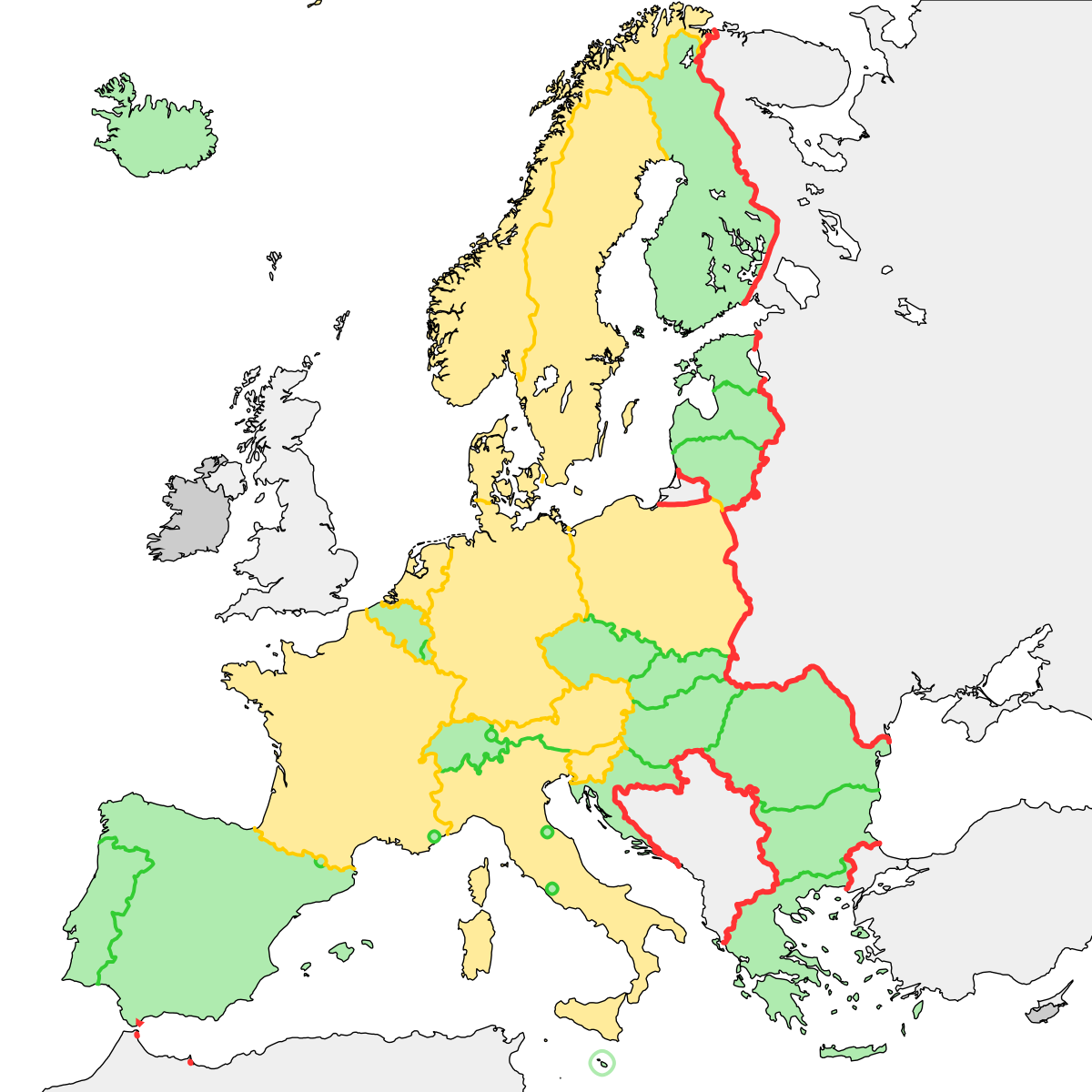IB Syllabus focus:
‘Governments manage growth directly via pro-natalist or anti-natalist measures and migration controls, shaped by cultural, religious, economic, social and political contexts.’
Direct population policies are deliberate government actions designed to influence population growth by targeting birth rates, death rates, and migration. They respond to demographic pressures and national priorities.
What Are Direct Population Policies?
Direct population policies involve government interventions that explicitly aim to alter population dynamics. Unlike indirect measures (such as education or healthcare reforms), direct policies act immediately and deliberately on demographic variables. These policies may encourage population growth (pro-natalist) or reduce it (anti-natalist). They also include migration controls, which influence the movement of people across borders.
Pro-natalist Policies
Pro-natalist policies encourage higher birth rates in societies facing population decline, labour shortages, or ageing demographics.
Pro-natalist policy: A government strategy designed to increase the birth rate and overall fertility of a population.
Objectives of Pro-natalist Policies
Preventing population decline and maintaining a stable workforce.
Addressing the economic challenges of an ageing population.
Enhancing military strength through larger population bases.
Common Pro-natalist Measures
Financial incentives such as child allowances, tax breaks, and subsidies for childcare.
Extended parental leave for mothers and fathers.
Affordable childcare services and housing benefits for families.
Campaigns promoting family values to shift cultural attitudes towards having more children.
Countries such as France and Singapore have implemented these measures, often combining economic incentives with social campaigns to encourage larger families.

The French Médaille de l’Enfance et des Familles recognises parents of larger families, exemplifying a direct pro-natalist incentive that complements financial supports and family-friendly policy. While the medal is symbolic, it reflects broader state strategies to raise fertility. Source.
Anti-natalist Policies
Anti-natalist policies aim to reduce birth rates in countries experiencing rapid population growth that threatens economic development and sustainability.
Anti-natalist policy: A government strategy designed to reduce the birth rate and slow down population growth.
Objectives of Anti-natalist Policies
Controlling overpopulation to ease pressure on resources, services, and infrastructure.
Reducing unemployment and poverty levels by slowing labour force expansion.
Supporting sustainable development by reducing environmental stress.
Common Anti-natalist Measures
Family planning programmes providing contraceptives and education.
Legal restrictions such as child number limits (as in China’s former One-Child Policy).

Official family-planning sign urging compliance with birth-control policy in China, exemplifying a direct anti-natalist measure implemented through state enforcement and messaging. The sign illustrates how governments can restrict fertility to slow growth. Source.
Awareness campaigns promoting smaller families as more desirable.
Incentives and disincentives such as subsidies for small families or penalties for exceeding birth limits.
These policies can be controversial, especially when they conflict with cultural or religious beliefs regarding family size.
Migration Controls
Alongside fertility-focused strategies, governments use migration policies to manage population numbers and composition.
Migration control: Government policies that regulate the inflow and outflow of people through border restrictions, quotas, or incentives.
Forms of Migration Controls
Restrictive controls such as visa limits, quotas, and border enforcement to reduce immigration.

Map depicting internal and external border-control arrangements in the Schengen Area, illustrating how governments operationalise migration controls alongside visa and quota policies. The geographic focus is Europe and therefore includes regional specifics beyond the notes’ global scope. Source.
Encouraging immigration by relaxing entry requirements, particularly for skilled workers, to offset low birth rates.
Emigration restrictions to retain skilled labour, as seen in some developing nations.
Migration policies are often shaped by economic priorities, political ideology, and social attitudes toward foreigners.
Cultural and Religious Influences
Direct population policies cannot be viewed in isolation from cultural and religious contexts.
Cultural values around family size strongly affect policy success. For example, large families are prized in some societies, making anti-natalist measures less effective.
Religious teachings influence acceptance of contraceptives or abortion, shaping the feasibility of anti-natalist policies.
Policies in Catholic countries, for instance, may avoid direct references to contraception due to religious opposition.
These cultural and religious dynamics highlight why identical policies can yield very different outcomes across countries.
Economic and Social Considerations
The design and effectiveness of population policies are also driven by economic and social conditions.
Economic Drivers
Countries facing labour shortages adopt pro-natalist or immigration-friendly policies.
Countries struggling with youth unemployment may impose anti-natalist or emigration policies.
Social Drivers
Concerns about gender equality, education, and healthcare access shape population strategies.
Policies must balance individual rights with state priorities, especially when controversial restrictions are introduced.
Political Context
Political ideologies and governance styles significantly influence how direct population policies are crafted and enforced.
Authoritarian regimes may impose strict fertility limits or coercive migration controls.
Democratic governments typically use incentive-based approaches while being constrained by public opinion.
Policies often shift with changes in leadership, reflecting evolving political priorities.
Key Points to Remember
Direct population policies act explicitly on births, deaths, and migration.
Pro-natalist policies encourage population growth through incentives.
Anti-natalist policies aim to slow growth using family planning and restrictions.
Migration controls regulate the movement of people in and out of a country.
Cultural, religious, economic, social, and political contexts all shape the effectiveness of these policies.
FAQ
Direct population policies act explicitly on demographic variables such as births, deaths, and migration through legal measures, incentives, or restrictions.
Indirect policies influence these variables more subtly by improving education, healthcare, or gender equality, which in turn changes fertility and mortality rates.
Migration controls can provide faster results compared to changes in fertility, which take generations to show effects.
Skilled migration can immediately boost the workforce.
Restricting immigration can quickly slow overall population growth.
They are often politically sensitive but may be seen as more adaptable than long-term fertility policies.
Pro-natalist measures are costly, requiring sustained investment in childcare, housing, and subsidies.
They may not change cultural preferences for small families in developed nations.
Economic instability can also undermine incentives, making families hesitant to have more children despite government support.
Authoritarian regimes often impose strict restrictions or mandates, such as fertility caps or coercive sterilisation programmes.
Democratic governments typically rely on voluntary incentives and are constrained by public opinion, human rights concerns, and the need for political legitimacy.
If too successful, anti-natalist policies can cause population ageing, leading to:
Shrinking workforces.
Rising dependency ratios.
Increased healthcare and pension costs.
Reversing the effects later can be difficult, as fertility rates may not rebound even after restrictions are lifted.
Practice Questions
Question 1 (2 marks)
Define the term pro-natalist policy and state one reason why a government might introduce such a policy.
Mark Scheme
Definition of pro-natalist policy: A government strategy designed to increase the birth rate and overall fertility of a population. (1 mark)
One valid reason, such as to address labour shortages, reduce the effects of an ageing population, or maintain economic growth. (1 mark)
Question 2 (5 marks)
Explain how cultural and religious contexts can influence the effectiveness of direct population policies, using examples to support your answer.
Mark Scheme
Identification that cultural values shape attitudes to family size (1 mark).
Explanation that in some societies, large families are seen as desirable, reducing the success of anti-natalist policies (1 mark).
Recognition that religious beliefs may restrict acceptance of contraception or abortion, limiting policy options (1 mark).
Example of Catholic countries resisting anti-natalist campaigns or China’s One-Child Policy facing cultural resistance (1 mark).
Overall clear explanation linking cultural/religious context to effectiveness of direct policies (1 mark).

